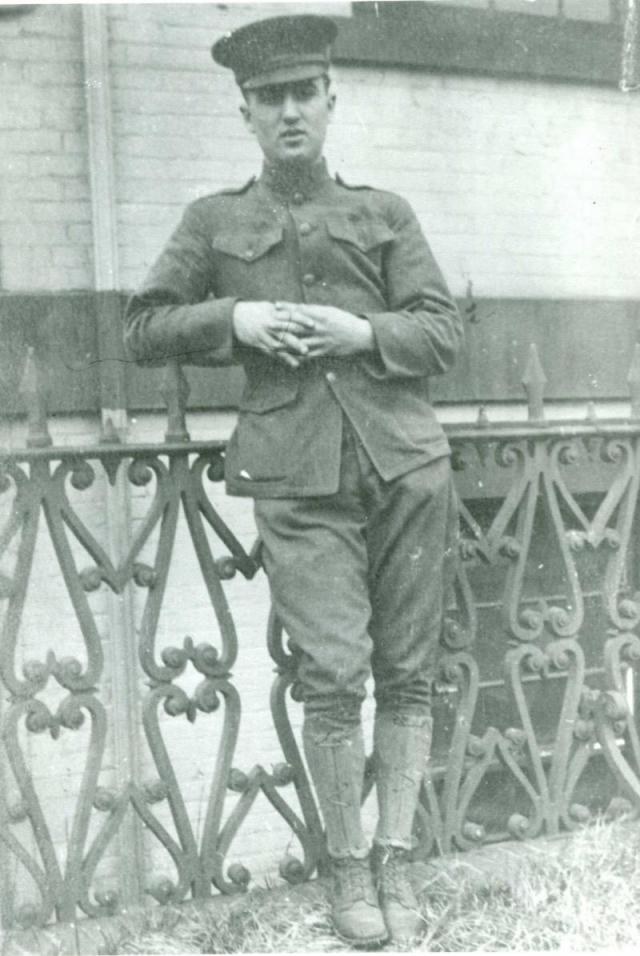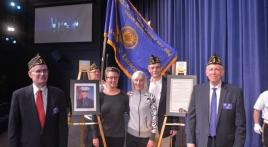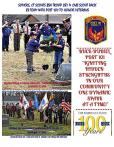Dig or Die, A novel of the First World War
The 100th anniversary of America’s involvement in World War I will be commemorated in April, 2017.
The U.S. had managed to avoid entangling itself in the war since its beginning in August 1914, through a two and a half year stalemate between the Allies (Britain, France and Russia) and the Central Powers (Germany and Austria-Hungary).
In spite of constant pressure from the Allies to join in the conflict and in spite of German interference with U.S. shipping, the sinking of the Lusitania in 1915, and the threat of all-out submarine warfare, we’d managed to stay out of the war.
That all changed when the British intercepted the Zimmerman Telegram from the German Foreign Minister offering the Mexican government Arizona, New Mexico and Texas in return for their allying themselves with Germany if the U.S. should enter the war.
That did it. President Woodrow Wilson presented a declaration of war to Congress on April 6, 1917 and we were in it. All of this had a major affect on the life of one Kenneth Redline of Altoona, Pennsylvania.
See, Ken had joined the Army after graduation from Thaddeus Stevens Trade School in Lancaster in 1915 for one reason: to play baseball. In those days, the army had baseball teams that played in the north in the summer and in the south in the winter, and all Ken wanted to do was play baseball.
Well, as they say, “the best laid plans of mice and men often go awry.” By the summer of 1916, Ken was in Mexico chasing Pancho Villa with Black Jack Pershing, and when the declaration of war came the following April, since Ken’s unit, Company C of the First Engineers, was already trained, they were some of the first to be shipped off to France.
Attached to the First Infantry Division, the Big Red 1, Ken and his compatriots found themselves in eastern France being trained by French officers that fall.
Now these Americans, though welcome to the fight, were untried and unproven, so there was something to prove, and prove it they did. From their first encounters with the enemy, through Cantigny, Soissons, St. Mihiel and on to the Meuse Argonne, they showed the world that they were as capable, competent and efficient a fighting machine as had ever been assembled, and they brought the war to a close one year and seven months after the declaration of war and only fifteen months after their arrival on the scene.
Ken survived with an enlistment record that reads like a chronology of the AEF in World War I, a Purple Heart, a Bronze Star and a Silver Star.
He may have begun as a baseball player, but he finished up as a soldier. But the return to civilian life wasn’t easy. The memories of ferocious combat haunted him as he tried to resume a normal life. He married, set himself up as a bricklayer, fathered six children in ten years and found himself in 1929 on the edge of disaster.
He’d bought two building lots and built two houses, one for his family and one to sell, but with the stock market crash and the subsequent Great Depression, Ken’s fortunes were doomed. Out of work, he lost both houses and remained unemployed for the next six years, struggling to support his family with odd jobs and any means of making a dollar here or there.
So what do you do when you can’t find work and have six children to support? Well, maybe you write a book about your experiences in the war. The Big War. The World War. The war to end all wars. That’s what Ken did. He wrote a book called Dig or Die. He might have sent it out to a publisher, but I’m not sure if he ever did. I didn’t come along until 1941, and by that time Ken was back to work sorting mail on the trains between New York and Pittsburgh and the book was stored away in his closet, not to see the light of day until his death in 1970.
I knew he’d written a book, knew it was stored in his closet, but I didn’t know what it was about until I acquired the manuscript from my sister in the late 1970s. I put it away with the intention of doing something with it someday. Eventually I decided to transcribe it to the computer so I could make copies for my siblings, nieces and nephews. I didn’t think about sending it out to a publisher because I was a writer myself and I knew how hard it was to get anything published.
Then one day after I’d retired from a career teaching World History in the public schools, I took another look at Dig or Die and realized that I had something more than a family keepsake. I had a first hand account of some of the most hard-fought battles in World War I, real insight into life in the trenches and deeply personal observations of men in war. He couched his story in fiction, probably because many of the men who had lived it with him were still alive in the 1930s, and his keen and honest observations were bound to have been controversial.
So I decided to edit my father’s book and present it as a gift to the world on the 100th anniversary of U.S. involvement in what became known as World War I. I like the thought that this book, written by a soldier in the Great War has stayed around long enough to be edited by his daughter 100 years later and published as a commemoration of that conflict.
World War I was overshadowed by World War II, twenty years later, and the accomplishments of the AEF faded into history. But as long as men who were there told their stories and their children kept the memories, people will always remember what they did in the fields and forests of France in 1918.
Judith Redline Coopey
Dig or Die is available beginning April 6, 2017 online or wherever books are sold.
Judith Redline Coopey is a writer of historical fiction, author of Redfield Farm, Waterproof, Looking for Jane and the Juniata Iron Trilogy: The Furnace, Brothers and Full Circle. She lives in Mesa, Arizona.





